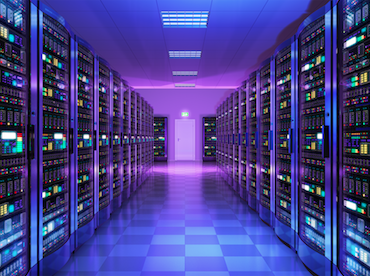Data Center Space Grows, Data Center Numbers Decline. Why?

The number of data centers has been increasing since 2009, yet this is all about to change. Experts predict that after peaking at roughly 8.6 million data centers in 2017, that number will begin to decline. The driving factor is the migration from smaller, in-house IT centers to data centers operated by larger service providers. Although the number of data centers will decrease, aggregate data center capacity will continue to grow.
Due to the shift to larger service providers, the role of the corporate data center will change as well. In the past, corporate data centers solely supported operations. Today, they have a variety of functions, including: testing new business models; developing and improving new products and retaining lasting relationships with customers. Because a data center must now support a variety of functions, its infrastructure must continuously change. This is harder to accomplish for smaller data centers, which is why you will see these smaller data centers disappear in the coming years. Today’s data centers need to be flexible, dependable and easily scalable.
The shift to larger data centers provides organizations with the infrastructure needed to adapt to a variety of different needs. It’s predicted that over the next five years, most organizations will stop managing their own data centers. This will lead to a higher demand for larger service providers. According to International Data Corporation (IDC), by next year, ‘mega data centers’ will account for 72.6 percent of all service provider data center construction projects.
Virtualization is also eradicating smaller data centers. With the increase in virtualization, investments in better power and energy efficiency are a top priority for data centers. Cloud data centers are currently in high demand. While they’re not necessarily the less expensive option, they provide speed, flexibility and efficiency. New technologies are pushing more organizations to operate using the cloud to improve overall operational efficiency.
Organizations are getting more creative in how they attempt to design a more energy efficient data center, compared to traditional brick-and-mortar data centers. From the design of the server racks and power distribution to the placement and quantity of CRAC units, data center designers and manufacturers are exploring new and innovative ways to be energy efficient.
The other major efficiency factor would be the availability of the Internet. The areas of the country that have the larger internet types are becoming attractive to organizations, because more and more data is being pushed through the cloud. Keeping the latency acceptable requires thicker internet pipes. Furthermore, if you have a bunch of small operations like transactions, social networking or things of that nature, those are just single point and clicks and can fly over small internet pipes, whereas cloud services require a database to send a large packet through the Internet. The latter requires an increased level of connectivity and larger internet pipes, which is another driving factor in the shift to larger service providers and larger data centers.
The need for flexible, dependable and faster technology has created the shift from smaller to larger data centers. While the initial number of data centers is decreasing, virtualization and the cloud are becoming the new standard among data centers to extend value and scale. With numerous changes and trends currently impacting data centers, the future of the industry will continue to expand, but will most likely fall to a few key players.
Erich Hamilton is director of engineering of DAMAC.










